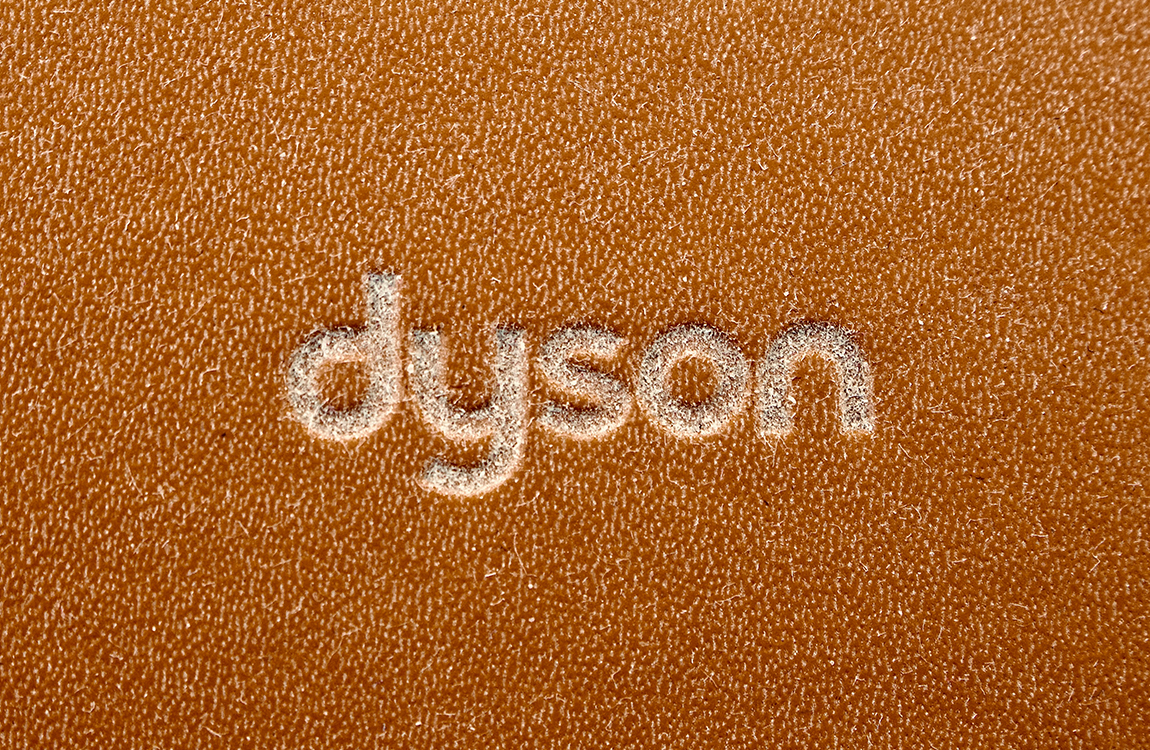Bad Chapters Can Still Create Good Stories
In the process of brand design, we often strive for perfection, hoping that every detail will be flawless. However, the reality is that a brand's success usually doesn't come easily; it's often forged through many setbacks and challenges. These imperfect chapters are not just obstacles; sometimes, they become the most compelling parts of the brand's story. As the saying goes, "Bad chapters can still create good stories." This article will explore, through a real case study, how brand design can find breakthroughs in imperfection and ultimately achieve greatness.
From Imperfection to Classic: The Innovative Journey of Dyson
When we talk about how imperfect chapters shape a brand, we have to mention Dyson's story. This brand, known for its innovative home appliances, is backed by countless failures from its founder, James Dyson.
In the late 1970s, Dyson noticed a major issue with traditional vacuum cleaners: the dust bags easily clogged, reducing their performance. He decided to tackle this problem by creating a bagless vacuum cleaner. However, this journey was far from smooth. He spent five years making over 5,127 prototypes, each one ending in failure. His design concept was even rejected by existing vacuum manufacturers, who were worried that a bagless vacuum would hurt their dust bag sales.
Despite these setbacks, Dyson didn't give up. He learned from each mistake, gradually improved his design, and remained committed to his vision. In 1983, he finally launched the world's first bagless vacuum cleaner, named the "G-Force." The product quickly became a hit in Japan, winning international design awards. However, Dyson still faced challenges in the UK market, struggling to find a partner willing to collaborate. So, he started his own company and, in 1993, released the Dyson DC01, which quickly took the UK by storm and became a market leader.
Today, Dyson is synonymous with innovation in home appliances, with products ranging from vacuum cleaners to hair dryers and air purifiers. Dyson's story teaches us that every failure in brand design is a stepping stone to success. These imperfect chapters not only do not hinder the brand's growth but also become some of the most inspiring parts of its story.
Imperfection is a Brand's Strength
Dyson's journey shows us that imperfect chapters can bring more authenticity and emotional resonance to a brand. When consumers learn about the struggles and efforts behind a brand, they often develop a deeper trust and connection. Here are a few key strategies for embracing imperfection in brand design:
1.Turn Challenges into Brand Stories
Setbacks in brand design can become powerful narrative resources. For example, Dyson's 5,127 failures didn't tarnish the brand; they became a symbol of its innovative spirit. Brands should actively share these challenges and the processes of overcoming them, allowing consumers to feel the brand's sincerity and perseverance.
2.Accept Imperfection in Design
Design doesn't need to be absolutely perfect. In fact, many successful brand designs include some imperfect elements, making the products feel more human and relatable. For instance, handmade products often have slight flaws that add to their unique value. Brands can intentionally retain some "natural marks" in their designs to enhance authenticity.
3.Focus on Long-Term Value
Imperfect chapters are just one part of a brand's story; what matters more is how the brand stays true to its values over time. For example, Dyson's commitment to innovation and relentless problem-solving has made its brand stand out in the market.
Imperfection Creates Classics
Brand design is like an unfinished novel, with each chapter writing the brand's future. Those seemingly terrible chapters often add depth and soul to the brand. Dyson's story is a prime example—his persistence and learning through 5,127 failures helped create a globally recognized brand.
"Bad chapters can still create good stories." This phrase reminds us that successful brand design doesn't come from a smooth journey; it comes from embracing and transforming imperfections. When we learn to accept challenges and value every chapter, we can create truly captivating brand stories.
References
"James Dyson: From Failure to Billionaire," BBC News, 2018
"Dyson: Reinventing Technology Design," Forbes, 2019
"How Dyson Overcame 5127 Failures to Build a Billion-Dollar Brand," Business Insider, 2020
不完美的篇章仍能成就動人的故事
在品牌設計的過程中,我們常常追求完美,希望每一個細節都能無懈可擊。然而,現實中,品牌的成功往往不是一帆風順的結果,而是經歷了許多挫折與挑戰後的淬煉。不完美的篇章,不僅不是品牌的阻礙,有時甚至成為品牌故事中最動人的部分。正如一句話所說:「Bad chapters can still create good stories.」(不完美的篇章,仍能成就動人的故事)。本文將通過一個真實案例探討,品牌設計如何從不完美中找到突破,最終成就經典。
從不完美到經典:Dyson 的創新之路
談到不完美篇章如何塑造品牌,我們不得不提到 Dyson 的故事。這個以創新家電聞名的品牌,背後隱藏著創始人詹姆斯·戴森(James Dyson)無數次的失敗經歷。
1970 年代末,戴森在日常生活中發現傳統吸塵器存在一個嚴重的問題:吸塵袋容易堵塞,導致吸塵器性能下降。他決定解決這個問題,創造一款不用吸塵袋的吸塵器。然而,這一過程並非一帆風順。他花了 5 年時間,製作了超過 5127 次原型機,每一次都以失敗告終。他的設計理念甚至被當時的吸塵器製造商拒絕,因為他們擔心無袋吸塵器會影響吸塵袋的銷售市場。
在這些看似失敗的篇章中,戴森並未放棄。他從每一次錯誤中學習,逐步改進設計,並持續堅持自己的理念。1983 年,他最終成功推出了全球首款無袋吸塵器,並將其命名為 「G-Force」。這款產品一經推出便在日本市場大受歡迎,摘得了國際設計大獎。然而,戴森在英國市場仍然面臨挑戰,無法找到願意合作的公司。於是,他創建了自己的公司,並於 1993 年推出了 Dyson DC01,這款吸塵器很快風靡英國,成為市場上的領導產品。
今天,Dyson 已經成為家電行業創新的代名詞,其產品不僅包括吸塵器,還擴展到吹風機、空氣淨化器等多個領域。戴森的故事告訴我們,品牌設計中的每一次失敗,都是邁向成功的墊腳石。這些不完美的篇章,不僅沒有阻礙品牌的發展,反而成為了品牌故事中最具啟發性的一部分。
不完美是品牌的力量
Dyson 的故事讓我們看到,不完美的篇章可以為品牌帶來更多真實與情感共鳴。當消費者瞭解到品牌背後的努力與挑戰時,他們往往會對品牌產生更深的信任與認同。以下是幾個品牌設計中,擁抱不完美的關鍵策略:
1.將挑戰轉化為品牌故事
品牌設計中的挫折,往往能成為強大的敘事資源。例如,Dyson 的 5127 次失敗,不僅沒有成為品牌的污點,反而成為其創新精神的象徵。品牌應該主動分享這些挑戰與克服過程,讓消費者感受到品牌的真誠與堅持。
2.在設計中接受不完美
設計不必追求絕對的完美。事實上,許多成功的品牌設計都包含了一些不完美的元素,這讓產品更具人性化與親近感。例如,手工製作的產品往往帶有細微的瑕疵,這些瑕疵反而成為了產品的獨特價值。品牌可以適當地在設計中保留一些「自然痕跡」,增強真實感。
3.專注於長期價值
不完美的篇章只是品牌故事的一部分,更重要的是品牌如何在長期中堅守自己的價值觀。例如,Dyson 堅持創新、不懈追求解決問題的精神,讓其品牌價值在市場中脫穎而出。
不完美成就經典
品牌設計就像是一部未完成的小說,每一個篇章都在書寫品牌的未來。那些看似糟糕的篇章,往往為品牌增添了深度與靈魂。Dyson 的故事正是一個典型的例子——正是他對 5127 次失敗的堅持與學習,成就了今天的全球知名品牌。
「Bad chapters can still create good stories.」這句話提醒我們,成功的品牌設計,不是來自於一帆風順的過程,而是來自於對不完美的擁抱與轉化。當我們學會接受挑戰,珍視每一個篇章時,就能創造出真正動人的品牌故事。
參考文獻
"James Dyson: From Failure to Billionaire," BBC News, 2018
"Dyson: Reinventing Technology Design," Forbes, 2019
"How Dyson Overcame 5127 Failures to Build a Billion-Dollar Brand," Business Insider, 2020
